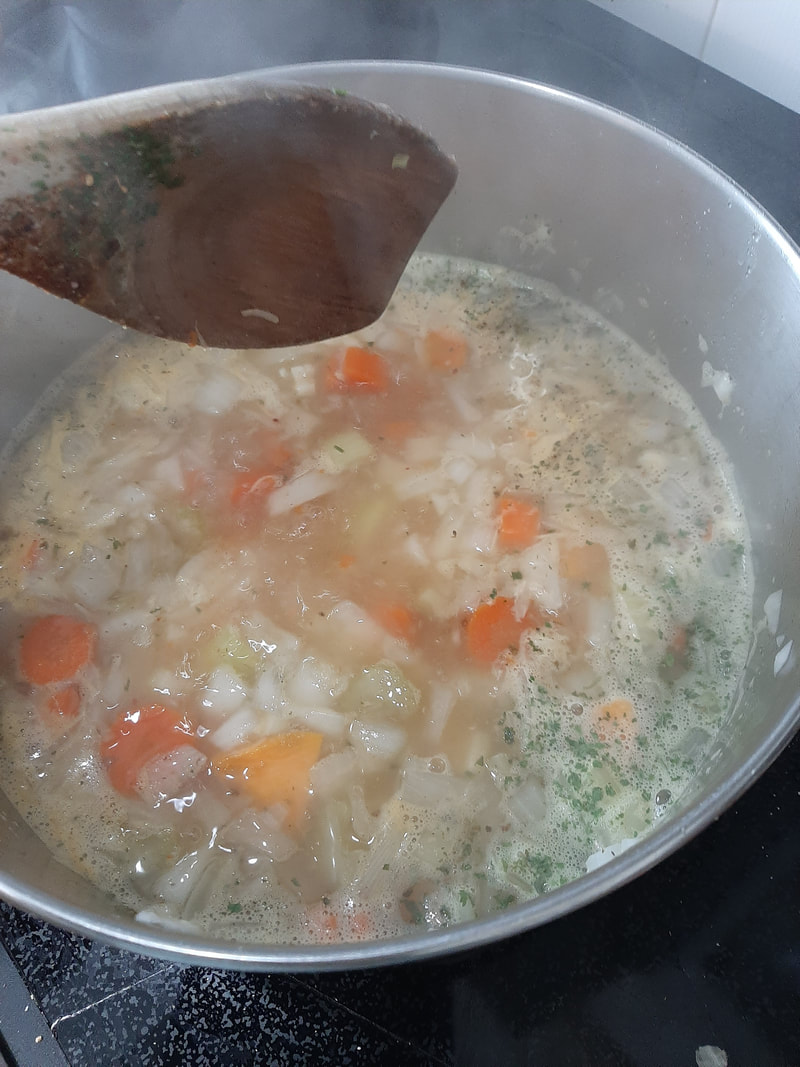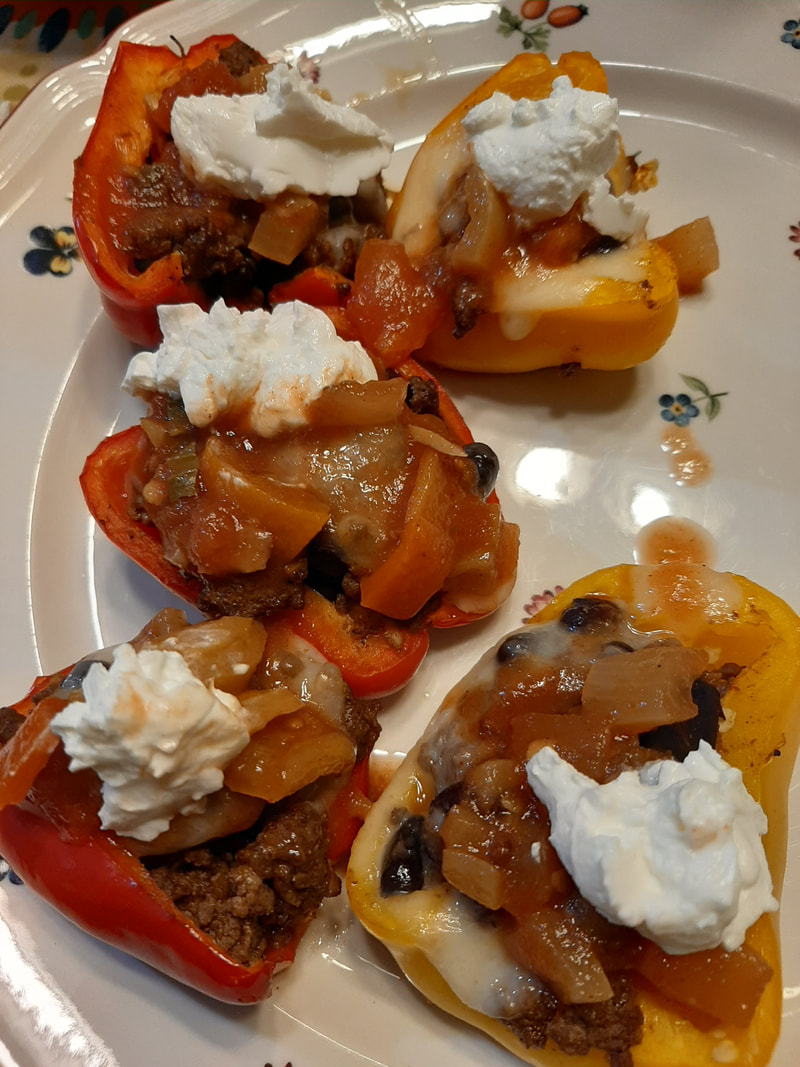|
Do you have a leaky gut? We have been told by many experts that all disease starts in the gut and that the health of our gut microbiome (the amount of good versus bad bugs) is the key to our mental and physical health but most mainstream medical professionals do not recognize leaky gut as a condition even though there is scientific evidence to support its existence.
Leaky gut is often referred to as a condition of “ increased intestinal permeability”. It involves bacteria and toxins being able to leak through the intestinal wall into the bloodstream. This happens when the tight junctions of the wall becomes loose allowing the leakage to occur and resulting in inflammation When asked about digestion, many of my clients deny any issues but on a further examination we see that the symptoms of a leaky gut exist. Their symptoms are gas, bloating, food sensitivities, digestive issues such as heartburn, constipation or loose stools, and skin issues. If you have any auto-immune conditions, migraines, thyroid abnormalities, mental health issues, skin conditions or food sensitivities you have a leaky gut. Do you have a leaky gut? Ask yourself: If you have digestive distress include gas, bloating, heartburn, indigestion, constipation or loose stools. If you have recurrent vaginal or bladder infections. If you have skin rashes including eczema, or psoriasis. If you have seasonal allergies or asthmatic symptoms. If you have any auto-immune condition like chronic fatigue, fibromyalgia, lupus, arthritis. If you have candida or yeast overgrowth (fungal) infection. If you have hormonal imbalances like PMS or Polycystic Ovary Syndrome. If you have mental health issues including anxiety, depression and irritability. If you have an intolerance to consumed fats. If you see undigested foods in your stool. You can do a transit time test by eating corn, which does not digest and mark the time of the first residue and the last residue. Long transit time indicates poor digestion. If you have smelly bowel movements - your stools should not smell after immediately releasing into the bowl. If you have a weak immune system and are always catching colds and flu. If you have any of these conditions your health may depend on fixing or at least improving your gut. In my next blog I will outline what is ruining your gut lining and how to fix it. In the meantime, keep a bowel movement journal. Track what you ate, your mood after consumption and what your stools looked like that day. It will help you understand your condition and where you need to make improvements. Please share and stay tuned for more on gut health.
0 Comments
As some of you know I love mushrooms for their taste and texture but also for their health benefits. I am always looking for new recipes and so when I came across this one I had to try it. The addition of spinach makes this soup visually appealing as well as tasty. A new spin on an old classic.
Mushroom and Spinach Soup Serves 4 1 pound mushrooms, any variety 2 tablespoons olive oil 2 cloves garlic, minced 6 ounces fresh baby spinach 6 cup broth, chicken, beef or vegetable* 1 sprig of thyme** ½ teaspoon sea salt ½ teaspoon freshly ground pepper With a damp cloth or paper towel, wipe any dirt off the mushrooms before slicing them. In a nonstick skillet coated with oil, cook the mushrooms over medium heat until softened and slightly browned, stirring frequently. Add the garlic and cook for another minute. Transfer the mushrooms and garlic to a soup pot and add the remaining ingredients. Bring the soup to a simmer over medium-low heat. Simmer for 15 to 20 minutes. Remove the thyme sprig. Place half the mushroom and spinach mushroom mixture and a couple cups of the liquid to a blender and blend until smooth. Place back into the pot and simmer for another 5 minutes before serving. *beef broth gives it a richer flavour. A combination of beef and vegetable is quite nice. **no fresh thyme, add some dried instead. I used 1 tablespoon. Craving lasagna but don’t want the traditional meat one. Check this one out. Try brown rice pasta, and any marinara sauce, even from a jar. I prefer goat or sheep cheese but you can substitute traditional cheese. I love the melted goat cheese mixing with the taste of the roasted vegetables. Add any other vegetables to the mix, if you wish. I used shitake mushrooms but any type works. Enjoy.
ROAST VEGETABLE LASAGNA 1 box (10 oz./280 g) gluten-free lasagna noodles 1 to 3 tablespoons (15 to 45 ml) olive oil 5 - 7 bell peppers, quartered 3 to 6 zucchini, thickly sliced 1 package mushrooms, sliced 1 tablespoon (15 ml) butter 1 (10.5 oz/297g) soft goat cheese 1 tablespoon (15 ml) Italian seasoning 1 egg 1 litre jar of spaghetti sauce or equivalent in homemade sauce 1 to 2 cups (240 to 480 ml) goat mozzarella, marchego or feta grated or crumbled or a combination of cheeses. Preheat the oven to 400° F. Using a large cookie sheet lined with parchment paper, place peppers insides down and zucchini in a single layer and brush with oil. Bake for 30 to 45 minutes or until pepper skins are blackened around the edges. Remove from the oven and peel skins from the peppers. Zucchini may not take as long as peppers. While vegetables are roasting, cook noodles according to package instructions. Rinse with cold water and set aside. Slice mushrooms in a tablespoon of butter and saute in a frying pan. Set aside. In a bowl, mix goat cheese, egg and Italian seasoning. To assemble in a 8 x 10 inch pan, start with a thin layer of sauce on the bottom. Add a layer of noodles, then roasted vegetables, then noodles, then goat cheese layer, noodles then mushrooms, then more noodles and top with sauce and cheese. You may add extra sauce with each noodle layer. Bake in 400° F oven for 30 to 40 minutes. *You can place the peppers in a plastic bag to steam if the skins do not slice off easily. It's a great day to hunker down and have a great big bowl of soup. This recipe might be perfect for today as the ingredients are ones that you may have in your house already. This soup is full of antioxidants, protein, magnesium, healthy fats and collagen if you choose to use bone broth. If nuts aren’t your thing, you can leave them out.
Carrot and Almond Soup Serves 4 2 tablespoons avocado, coconut or olive oil 2 medium onions, peeled and chopped 2 garlic cloves, peeled and chopped 6 carrots, trimmed, peeled and chopped (or 4 carrots and one sweet potato) 2 celery stalks, peeled and chopped 6 cups vegetable or bone broth ½ cup (100 grams) ground almonds 2 to 3 tablespoons parsley 2 to 3 tablespoons coriander (optional) Salt and pepper to taste Place the oil in a large saucepan and heat over medium heat. Add onions, garlic, and celery and saute until soft. Add carrots and stock and bring to a boil. Lower the heat and simmer for 30 minutes or until carrots are soft. Remove from heat. Using a hand blender blend the mixture until it becomes smooth. Alternatively, blend in a food processor or blender. Blend in herbs and ground almonds. Reheat and serve. I am just loving these Almond Biscotti! In fact, I have to package them for gifts as soon as they are ready or I will eat them all myself. They are gluten free and use coconut sugar as a sweetener. I have also used Swerve, a sugar substitute used by Keto dieters and they turn out just as well. The cooking time means they are not a quick treat but they are so well the wait.
Almond Flour Biscotti Makes about 18 slices Cooking time is about 1 hour and 40 minutes total. 1 ¾ cups (209 g) almond flour ⅔ cup (94 g) coconut sugar 1 teaspoon baking powder ⅛ teaspoon salt 1 large egg 1 tablespoon melted coconut oil ½ teaspoon almond extract Optional add-ins ¼ cup sliced almonds ½ cup dark chocolate Crushed nuts, for topping Preheat the oven to 350 degrees F. Line a large baking sheet with parchment paper. In a large bowl, combine the dry ingredients, including the almond flour, coconut sugar, baking powder and salt. Whisk well enough to break up any clumps. Add the melted coconut oil and almond extract to the wet ingredients. Add in the egg. Mix until a thick, sticky dough is formed. Add in sliced almonds if using. Transfer the dough to the prepared baking sheet, and use your hands to press it into a “log” shape, about 8-9 inches long, and around 4 inches wide. (This will determine how big your cookies will be so for smaller cookies make it less wide and more long). It should be about ½ inch thick. Place in the oven and bake for 20 minutes or until edges are slightly golden. Remove the pan from the oven and let the loaf cool completely. It will take about 30 minutes. Transfer to the freezer for about 1 hour to cool and harden. This will make them easier to slice. Once cool, slice the loaf in to ½ inch pieces, making about 18 to 20 slices. Preheat the oven to 250 degrees F for the second bake. Carefully arrange the slices in a single layer on the baking sheet, and bake for 30 minutes. Remove from oven, flip the cookies and bake for another 30 minutes. Turn off the oven and let the biscotti stay in the oven as it cools. This will make them crisp. When cool, you can dip them in melted chocolate and sprinkle with chopped nuts but I love them plain with a cup of tea. Store in an airtight container in the fridge or in an open container at room temperature.  Chocolate Biscotti
I have shared my Almond Biscotti with many friends and they all agree they are delicious and addictive. There is also a Chocolate version which is equally tasty! Dress them up with some slivered almonds or dip them in dark chocolate. Great with a nice cup of hot chocolate, coffee or tea.
Add the remaining wet ingredients to the dry ingredients. Stir in the egg, coconut oil, and extract if using. Mix until a thick, sticky dough is formed. If you want to add in sliced almonds for texture, now is the time to do it. Transfer the dough to the prepared baking sheet, and use your hands to press it into a "log" shape, about 8-9 inches long, and around 4 inches wide. You want the loaf to be about 1/2-inch thick. Once it's formed, place it in the middle rack** of your oven to bake for 20 minutes, or until the edges are lightly golden. Turn off the oven, remove the pan, and let the loaf cool completely. Cool at room temperature for 30 minutes, then transfer it to the fridge or freezer for 1 to 2 hours, to cool completely. This will make it easier to slice. Once it's cool, slice the loaf into 1/2-inch pieces, making about 20 to 22 slices. Preheat the oven to 250ºF for the second bake. (Do not use a higher oven temp!) Carefully arrange the slices in a single layer on the baking sheet, and bake for 30 minutes. Then, remove the pan, flip the slices, and bake for another 30 minutes. Turn off the oven and let the biscotti stay in the oven as it cools. This will help them totally crisp up. When the biscotti are cool, they should be perfectly crispy and ready to serve. Almond flour baked goods will get soft if you store them in an airtight container at room temperature. Store in an open container at room temperature, or in the fridge in an airtight container to keep them crispy. They should last for 3-4 days at room temp, or up to 2 weeks in the fridge. * Swerve is a sugar replacement that is popular among low carb fans. It is made from fruits and starchy root vegetables and contains no artificial ingredients or preservatives. It has zero calories. ** Bake in the middle of the oven. If you bake too close to the element the bottom may burn. To Make Them Special for Gift Giving:
out I have been very busy writing my next book and haven't shared a recipe in a while even though I have been cooking more than ever - creating and recreating.
I have also been searching for recipes on the internets and cookbooks and found so many were filled with unhealthy ingredients. With a few tweaks though, they could be transformed and that is what led me to this gem. So today I am sharing my Bell Pepper Nachos. You will not even miss the corn chips as the peppers are so sweet and delicious. Okay, you might miss them a bit but these will still hit the spot. A great Sunday afternoon snack for the family. Enjoy. Susanne Bell Pepper Loaded Nachos Serves 6 6 large red, yellow or orange bell peppers 1 pound ground meat (turkey, beef, lamb) Taco Seasoning ¾ cup canned black beans, rinsed and drained ¾ cup organic, Non-GMO, cooked corn kernels, fresh or canned ¾ diced tomatoes ¼ cup sliced jalapenos (optional) ½ to 1 cup goat cheddar cheese or Mexican cheese blend Toppers: Salsa Sour Cream Non-fat Greek Yogurt Chopped Scallions Preheat the oven to 375° F. Prepare a large baking pan with parchment or use a silpat liner. Set aside. Remove the stems and seeds from the bell pepper and cut each into quarters. Lay the bell pepper chips in a second layer with their insides facing up. In a large heated skillet, cook the ground meat, Add the taco seasoning along with about ⅔ cups water. Add the black beans, corn, and jalapenos, if using. Mix well until well combined and heated through. Spoon the meat, bean mixture over the bell pepper pieces. Sprinkle on the cheese and bake for about 10 minutes, until the cheese is melted. Remove the baking sheet from the oven. Either place toppings on peppers or serve toppings on the side.  The idea for this challenge at this particular time in our lives came from two places. Firstly, we are all living in strange, uncertain times that are causing us to be in a constant state of cortisol (stress hormone) stimulation. For some this highly felt and observed, for others it is a low level hum and for others life seems totally normal. We are all experiencing this pandemic differently. And we are all handling it differently. But that does not matter. Even if you are not "feeling stressed" the energy in the world has shifted and is effecting us all individually and collectively. Which brings us to my second reason for implementing this challenge - our immune systems. Our immune systems are not only being challenged by stress but also by everything we consume. Never before has there been a time where we should be taking the best possible care of our health as humanly possible. Now is the time to eat healthy, sleep well, exercise and rest and renew and yet many people are doing the exact opposite. So I want to present this 14 day challenge as a time to reset. Each day you will receive a posting, video or written word, asking you to incorporate some changes (for some) into your life. I am planning to give you at least 2 recommendations in each post. Please take what you can from these posts and store the rest for a rainy day. Do what you can! Please feel free to share this newsletter with friends and family and encourage them to sign up as well. The fee was participating is a donation to the food bank. Please send me an email to register. Sole (pronounced so-lay)
Sole is a solution of water and pink Himalayan sea salt. It contains all eighty-four essential trace elements your body needs. Adding a bit of this solution to your drinking water provides you with much needed electrolytes and may help with leg cramps, dry skin, and insomnia. It is especially useful when you are experiencing symptoms from detoxing or when you have Keto flu. Recipe:
Each morning, pour 8 ounces of fresh water into a glass and add a small amount of the sole solution. Start with ¼ teaspoon, stir and taste. You want it to taste like mild salt water. You can go up to 2 tablespoons. Use only plastic measuring spoons and lids. Do not pour into a bottle or slosh the solution around. You don't want to be drinking salt particles, just the solution. You can also add 1 teaspoon apple cider vinegar for digestion as well as for taste. It gives it a sweet and salty flavor. We all need to keep our immune systems strong by eating well and making healthy lifestyle choices. Here is a little helper in case you are feeling you need a boost: Immune Boosting Fire Cider 1 litre of organic apple cider 3 tablespoons apple cider vinegar 1 cup organic orange or grapefruit juice 1 tablespoon coconut oil (liquid works best) 2 tablespoons grated ginger ½ teaspoon turmeric, powder or grated Pinch of black pepper and salt. 1 tablespoon of cinnamon 1 tablespoon of garlic (optional: if you are going to be around people) Add all ingredients in a large pot and bring to a boil. Simmer for 20 to 30 minutes and serve.  I picked up a book at the library called Sex Matters: How Male-Generic Medicine Endangers Women's Health and What We Can Do About It and I just have to say, "wow". I learned so much about how medicine, diagnosis and treatment is mostly based on a male centric model putting women in danger every day. We need to get the word out, and therefore, I must share some interesting things I learned from my read. Women are more likely to be misdiagnosed, given improper treatments and experience complications from medical treatments received. This is because women are underrepresented in clinical and research trials, and most trials do not account for sex differences as a variable. Women need to know how their bodies work differently than a man’s. It is necessary to know how to ask the right questions of your health care provider to ensure proper diagnosis and treatment. Heart attacks and strokes present differently in men and women leading to women being sent home from the emergency wards without treatment. Women are three times more likely to die of a cardiac event than men. Women do not present with classical heart attack symptoms but rather have a host of symptoms such as unusual fatigue, shortness of breath, brain fog, nausea and digestive issues. Female heart disease is often taken for anxiety and women are often told to go home and relax. There is even a delay once intervention is asked for (call for ambulance) in getting help as professionals often do not feel a sense of urgency compared to if a male patient complains of chest pain. Female heart disease looks different from men’s. Rather than have hardening of the arteries women's plaque erodes into the blood vessels, making them stiffer and less flexible. No clotting shows up in the arteries. Risk factors have different "weights" for men and women. Smoking is a higher risk for women than men, hypertension less of a risk factor for women. Perinatal complications, use of hormones, migraines and autoimmune disease are risk factors for women. Taking multiple medications is a major contributor to cardiac events in women but not in men. Strokes also present differently in women and often missed in diagnosis. Whereas men show classic symptoms of loss of function, women may get a headache, or have a sudden change in mental or emotional status. Not all prescription drugs are studied on women. Women are more likely to be prescribed medications and are more likely to have adverse reactions to drugs. We see this in alcohol metabolism as well. Taking into account height, weight and age women feel the effects of alcohol sooner and more strongly than men. This is also true for Ambien (sleep aid), and other drugs including pain killers. Hormones impact drug metabolism. We know this because women react differently to drugs depending on where they are in their menstrual cycle. Women experience greater pain when estrogen levels are low. Not all pain meds work on women. Related to this factor is that women have a heightened inflammatory response compared to men when stressed due to the interaction of estrogen and cortisol. Women are more likely to be given a psychiatric diagnosis like anxiety than a physical one. There is an implicit bias that exists in treating women. Fortunately for women, sex and gender differences are a hot topic in medicine today. Many physicians are fighting to change the research and clinical practice standards to reflect female biology. Today a study came out that found that if a woman had a female doctor in the emergency department she was more likely to get proper treatment and less likely to have to return a second time with symptoms. Always ask your health provider about sex and gender specific tests, procedures, prescriptions and dosing. Be your own advocate. Know your body and trust your instincts. . |
AuthorSusanne Jakubowski is a holistic nutritionist, yoga teacher, Thai Yoga Therapist, and cancer survivor. CategoriesArchives
January 2022
|
Photos from mripp, nikita_nikiforov, photoheuristic.info, focusonmore.com, Jeanne Menjoulet, Scouse Smurf, Ktoine, verchmarco, Kris Krug, U.S. Army Space and Missile Defense Command (SMDC), wuestenigel, verchmarco (CC BY 2.0), Bernt Sønvisen, verchmarco, wuestenigel (CC BY 2.0), Alizarin Krimson, nillamaria, verchmarco, Per Harald Olsen, trendingtopics, wuestenigel, Markus Binzegger, JIRCAS, forthwithlife, colinpoe, BladDad, Stephen Pearson, UNDP Ukraine, GreenFlames09, jlodder, mealmakeovermoms







 RSS Feed
RSS Feed
